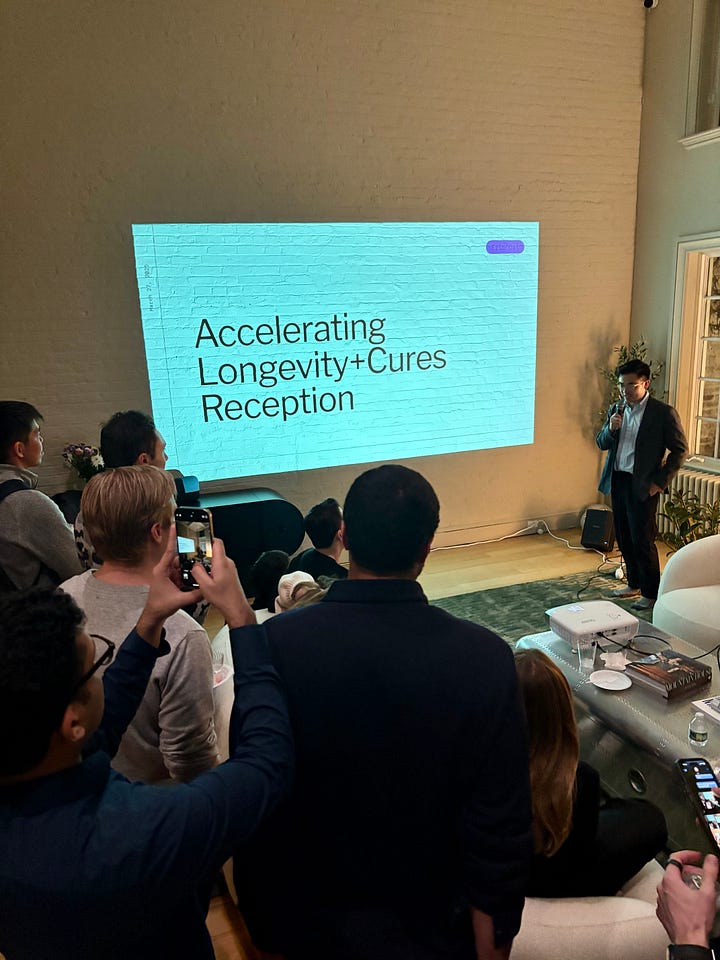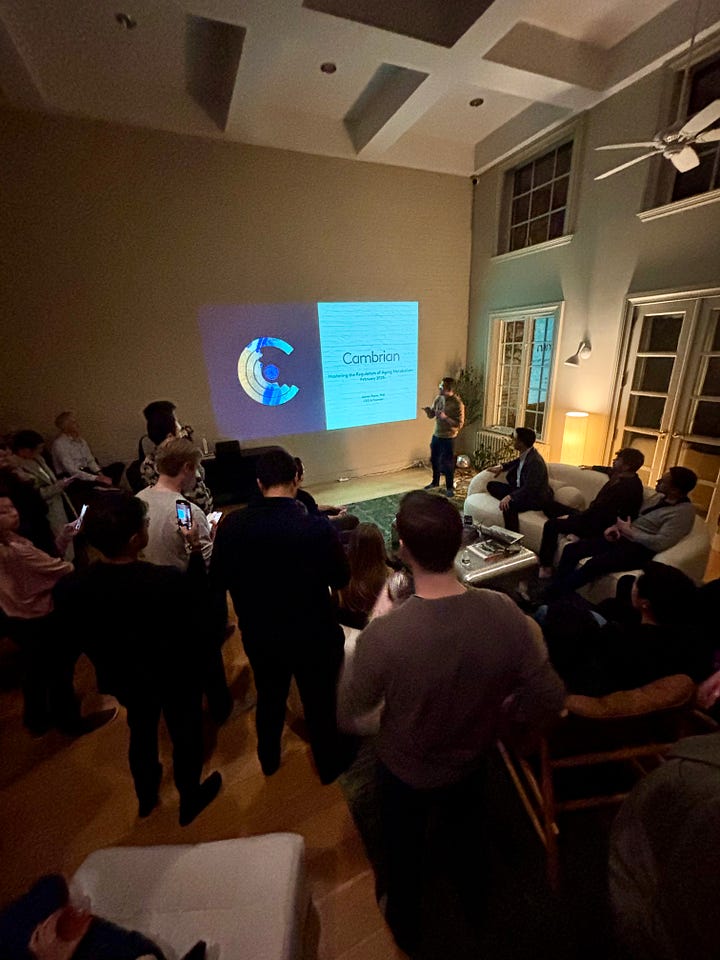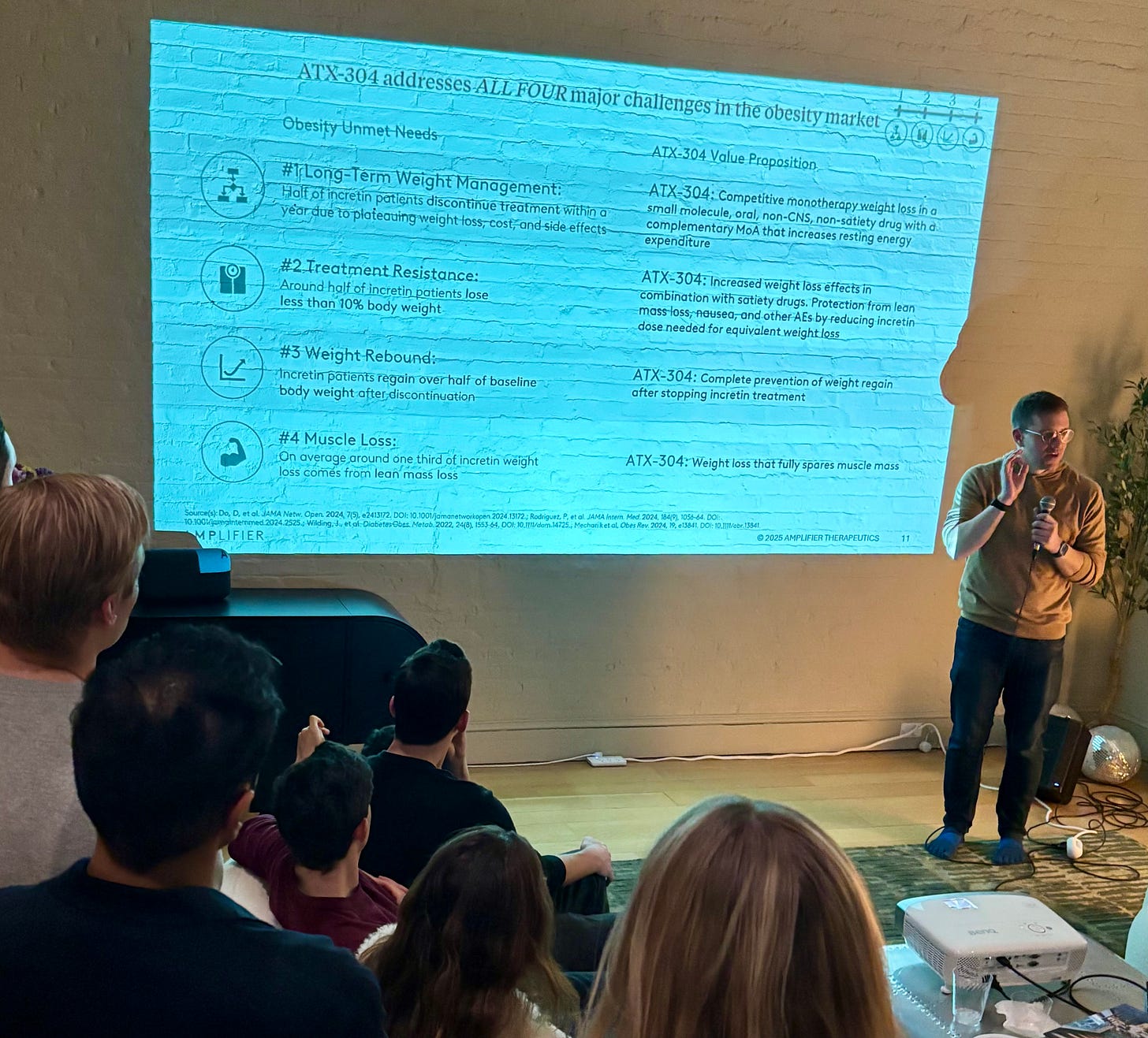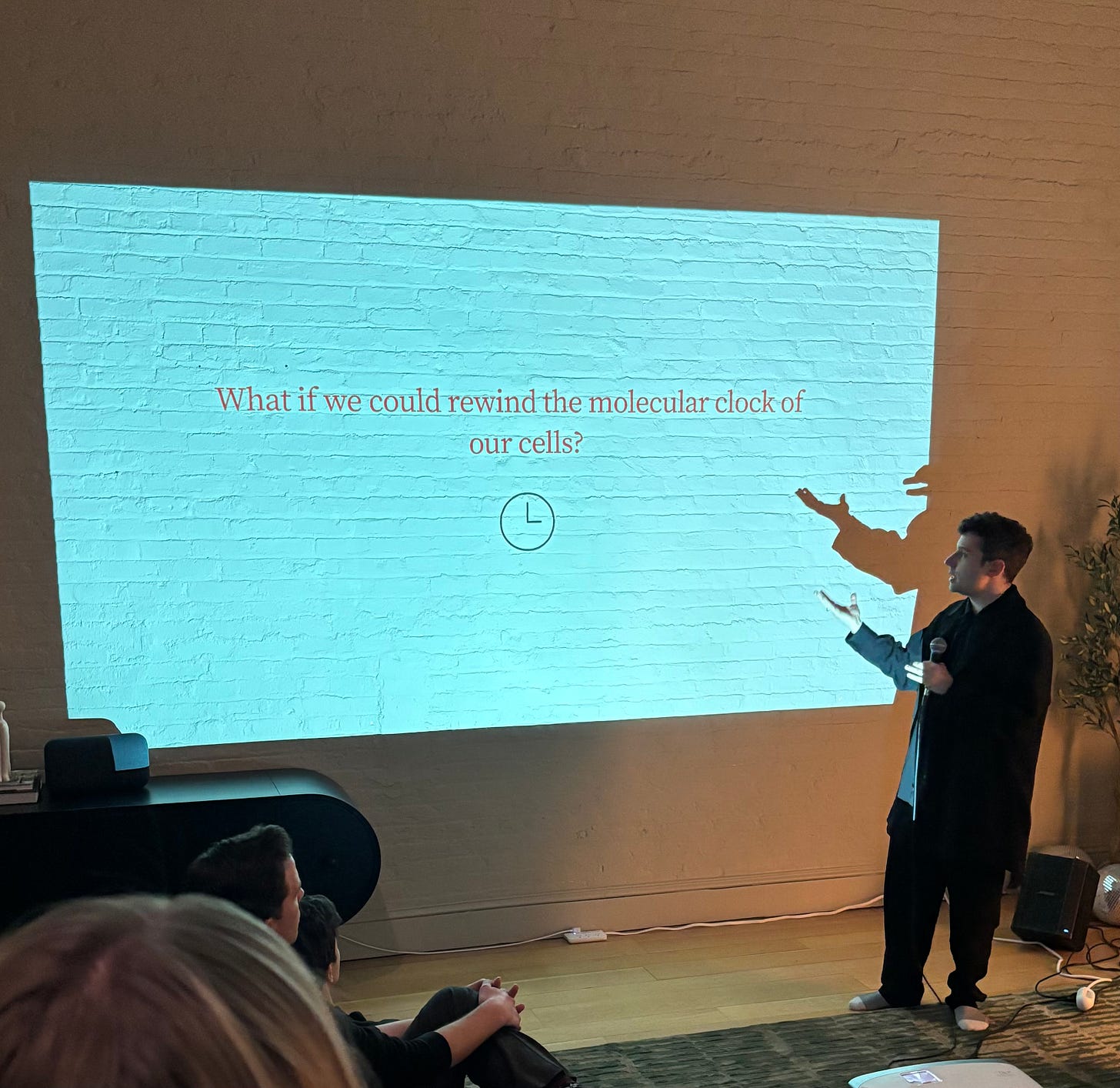Can We Reverse Aging? These Scientists Think So
How AI is powering the search for anti-aging treatments; longevity science from Cambrian Bio and Harvard Medical School; the "Ozempic for muscle growth."
Note to readers: I am currently looking for my next full-time professional role. After years of independent healthcare consulting, I’m excited to get back out there and build. Looking for roles in marketing or product leadership at a high-growth healthcare or health tech company, or investment professional at a venture fund. If you have suggestions of people I should talk to, please shoot me an email. Thanks!
In the new book Abundance, co-authors Ezra Klein and Derek Thompson imagine a scene in the year 2050: You wake up in the morning, and an autonomous drone “drops off the latest shipment of star pills”—medicines that slow cellular aging and reduce overeating.
Imagine being able to regrow thinning hair, rebuild lost muscle, or even turn back the clock on aging skin—not with cosmetic procedures or supplements, but with real, science-backed therapies that target your cells from the inside out.
That’s the future researchers are working toward, using advanced biology and AI-powered models to develop the next generation of regenerative treatments.
At a recent talk in New York by three leading scientists in the field of aging research, I got a look into what this future could look like—and what’s happening behind the scenes to make it real.


Longevity science is having a moment. Money is pouring into companies doing basic research on longevity drugs. I’ve worked with some of them.
Last year I visited a longevity clinic in New York and wrote about my experience. More people are taking metformin and NMN for their potential longevity benefits. New AI tools are making it easier to track our biological age and study interventions to slow the aging process.
The world of longevity can be split into two tribes:
Biohackers and wellness influencers—the people who swear you’ll live to 150 if you just ice-bathe at dawn, microdose tree bark, and buy their $90 olive oil. These are the high priests of Instagram immortality, armed with ring lights, supplement codes, and suspiciously shiny hair.
Then there’s the other side: the actual scientists. They’re decoding what really causes aging—cellular senescence, mitochondrial dysfunction, DNA damage—and building the next generation of therapies. You don’t see them much on IG or TikTok, but they’re the ones quietly leading a revolution.
The Metabolic Enhancer
Dr. James Peyer is founder and CEO of Cambrian Bio, a distributed R&D company that targets the diseases of aging and their underlying causes. The company has raised over $200 million since its launch in 2019.
Dr. Peyer spoke on the challenges of developing longevity drugs:
Aging isn’t classified as a disease by the FDA.
Lack of clear biomarkers. What does it mean to “slow aging”?
Clinical trials are long, expensive, and risky.
“You can’t just run an aging trial. You have to find stepping-stone diseases—like obesity—that regulatory agencies already recognize.”
The stepping-stone approach involves first testing longevity-focused drugs on well-defined age-related diseases or genetic conditions—like obesity or prediabetes—where the drug is more likely to show quick, measurable benefits.
Once a drug proves itself in this initial indication, it can then move into broader prevention trials targeting aging itself. This approach allows researchers to create value early, reduce risk, and build a pathway toward developing true geroprotective therapies that may one day prevent or delay multiple age-related diseases.
Dr. Peyer presented research on new compounds that may replicate the benefits of exercise: enhancing metabolic efficiency, preserving lean muscle mass, and improving mitochondrial resilience.
One company leading this effort has developed a novel compound called ATX-304, a dual AMPK and mitochondrial modulator that mimics the metabolic effects of exercise and resets cellular metabolism to a more youthful state.
In mice, this drug showed impressive results: rapid fat loss without reducing appetite, preservation of muscle mass, resistance to weight regain, and improved metabolic efficiency.
Dr. Peyer said the compound could be a true metabolic enhancer—a form of long-term preventive medicine for people in their 30s, 40s, and 50s who want to maintain mitochondrial function, prevent muscle loss, and delay the onset of metabolic disease:
“Obesity is now a validated biomarker for multi-morbidity risk. If you can show a 5% weight loss, you can get a drug approved by the FDA. That’s the metabolic shortcut—treat obesity with a longevity pathway drug, and you’re halfway to preventive medicine for aging.”
“The Ozempic for Muscle Growth”
Can AI tools help scientists identify compounds to reverse muscle degeneration?
The tech-driven approach is being led by researchers like Harvard Medical School professors Jonathan Gootenberg and Omar Abudayyeh. The scientists, a Jewish American and Palestinian American, met as undergrads at MIT. Today they jointly run a Harvard lab and cofounded a gene-editing startup.
They spoke about using AI to develop therapies that promote muscle growth, stimulate hair regeneration, and potentially reverse aspects of the aging process:
“We can now measure and model distinct aging types—like muscle degeneration, tissue regeneration, and disease progression—by running massive, live-cell screens that connect biological signals to real human data, like blood samples. It’s experimental biology at scale.”
Professors Gootenberg and Abudayyeh highlighted research to reverse the muscle loss that often comes with aging (or with rapid weight loss). Using live human cells in the lab, researchers found several promising molecules that helped muscle tissue grow back stronger—without triggering unwanted side effects.
“We asked, can we take old muscle cells and make them look young again—at the transcriptional level? After testing thousands of small molecules, one of our top hits moved gene expression from the ‘old’ profile to the ‘youthful’ profile. It’s not science fiction—it’s just good modeling and good biology.”
Hair follicle regeneration is another area that has shown promise. Researchers screened a wide range of natural peptides to see which ones encouraged dormant hair cells to start growing again. These are now being tested further for use in treating hair loss and improving skin health.
The Virtual Cell Model
Scientists are building “virtual cells”—computer simulations powered by AI that can predict how a real cell will behave when exposed to different treatments.
Computational biology and virtual cell models let scientists test thousands of potential anti-aging compounds—dramatically speeding up the time it takes to bring new drugs to market.
Researchers have modeled the aging process in muscle cells, identifying potential treatments that could rejuvenate aged cells. One such treatment involves a peptide related to genistein, a compound found in certain plants, which has shown promise in restoring youthful gene expression profiles in aged muscle cells. (You can buy genistein on Amazon, but in response to a crowd question, the Harvard professors said it’s still unproven: “I wouldn’t buy it yet.”)
While none of these treatments are ready for prime time just yet, the implications are huge. We’re moving toward a world where age-related changes—like thinning hair, muscle loss, or slower healing—could be addressed at the cellular level.
Nerd Corner
Want to go deeper? Here are some links to latest research on longevity science:
Epigenetic reprogramming—introducing the Yamanaka factors can potentially reset cellular aging markers, leading to rejuvenation in model organisms.
Three pathways—AMPK, mTOR, and cellular senescence—that are central to our understanding of aging and longevity.
Biomarkers used in aging clocks (e.g. DNA methylation, proteomics, telomeres, metabolomics).
Thank you for reading this week’s edition of Vitamin Z.
Until next time,
By Daniel Zahler
Hi there and thanks for reading. I created Vitamin Z to share my research on health and wellness, longevity and healthy aging, and ways to optimize cognitive, physical and emotional health. I am an advisor to Noom, a digital health company helping millions live better longer, and a project leader at GLG, where I advise global business leaders on healthcare innovation.
Enjoyed your reading experience?
Follow me on LinkedIn and X / Twitter
Hit reply with your feedback and ideas :)
Share this post with others.






While the longevity movement is booming, real scientific breakthroughs remain elusive. Rapamycin and metformin show promise but have yet to prove they can extend healthy human lifespan (or healthspan). Hype often outpaces evidence, and caution is warranted. True anti-aging medicine may still be years—or decades—away.
https://ramkrishnan.substack.com/p/the-longevity-boom-hype-hope-and
I love how so many resources, money, and effort are being put into longevity. I learned the other day that $1bn dollars are invested into AI every day, and a good portion of that goes to longevity. How awesome would it be to be 200 but to have the body and mind of a 30-year-old? Let's see if we can make it in our lifetime. Thanks for the article :)